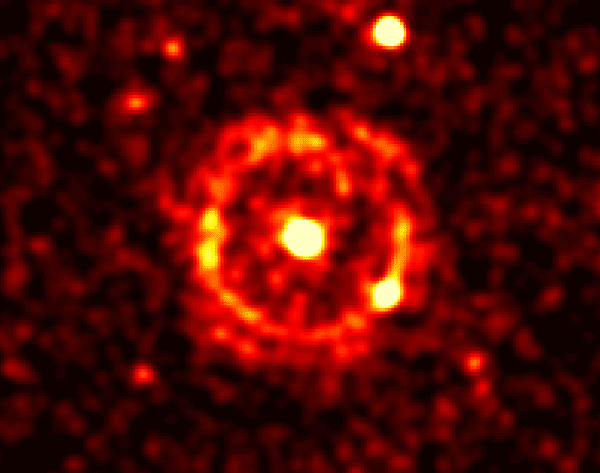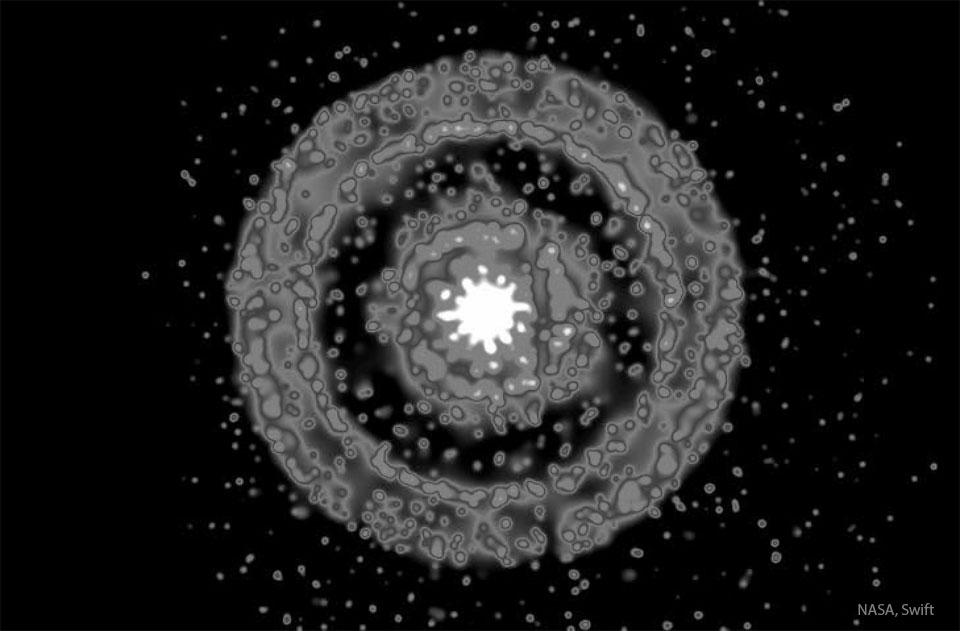...hmmm. So I see a massive old star in a distant galaxy imploding into a black hole within 10 hours, accidentally firing its natal jets right in our direction 1.9 billion years ago...
"The signal, originating from the direction of the constellation Sagitta, had traveled an estimated
1.9 billion years to reach Earth. Astronomers think it represents
the birth cry of a new black hole, one that formed in the heart of a massive star collapsing under its own weight. In these circumstances, a nascent black hole drives powerful jets of particles traveling near the speed of light. The jets pierce through the star, emitting X-rays and gamma rays as they stream into space. "
https://www.nasa.gov/feature/goddard/20 ... smic-blast
This sequence constructed from Fermi Large Area Telescope data reveals the sky in gamma rays centered on the location of GRB 221009A. Each frame shows gamma rays with energies greater than 100 million electron volts (MeV), where brighter colors indicate a stronger gamma-ray signal. In total, they represent more than 10 hours of observations. The glow from the midplane of our Milky Way galaxy appears as a wide diagonal band. The image is about 20 degrees across.
 Credit: NASA/DOE/Fermi LAT Collaboration
Credit: NASA/DOE/Fermi LAT Collaboration
Images taken in visible light by Swift’s Ultraviolet/Optical Telescope show how the afterglow of GRB 221009A (circled) faded over the course of about 10 hours. The explosion appeared in the constellation Sagitta and occurred 1.9 billion years ago. The image is about 4 arcminutes across.
 Credit: NASA/Swift/B. Cenko
Credit: NASA/Swift/B. Cenko
Swift’s X-Ray Telescope captured the afterglow of GRB 221009A about an hour after it was first detected. The bright rings form as a result of X-rays scattered from otherwise unobservable dust layers within our galaxy that lie in the direction of the burst.
 Credits: Credit: NASA/Swift/A. Beardmore (University of Leicester)
Credits: Credit: NASA/Swift/A. Beardmore (University of Leicester)
Compare with: X-Ray Rings Expand from Gamma Ray Burst GRB 031203
 https://apod.nasa.gov/apod/ap040130.html
https://apod.nasa.gov/apod/ap040130.html
 X-Ray Rings Around a Gamma Ray Burst
X-Ray Rings Around a Gamma Ray Burst




